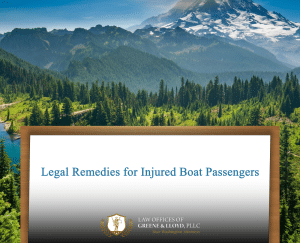## Navigating Statutes of Limitations for Personal Injury in Washington State
Understanding the statutes of limitations for personal injury cases in Washington State is crucial for anyone considering legal action. These laws establish strict time frames within which you must file your claim, directly impacting your ability to seek compensation for damages incurred due to injuries. Failure to adhere to these limits can result in losing the right to pursue a claim altogether. As such, grasping these time constraints is not merely legal jargon but a vital step in securing your rights under the law.
Statutes of limitations serve as a mechanism to promote timely resolution of disputes. They pressure claimants to act promptly while evidence is still fresh and witnesses’ memories remain intact. In Washington State, the statutes vary depending on the nature of the claim, making it essential to understand which specific statute applies to your situation. This crucial knowledge forms the foundation for building a strong legal case and pursuing the compensation you deserve.
The Law Offices of Greene & Lloyd, PLLC, prioritize educating their clients about these limitations and maximizing their chances for recovery. By providing personalized attention and expert guidance, they ensure that individuals understand not just what the law states but how it pertains to their unique circumstances.
## Defining Statutes of Limitations
At their core, statutes of limitations are laws that dictate the maximum time frame during which a legal action can be initiated. These statutes vary significantly depending on the type of claim and jurisdiction, ensuring that claims are filed while evidence is available and the circumstances surrounding the incident are still relevant. In Washington State, personal injury claims are no exception, and specific limitations exist to regulate how individuals may pursue their legal rights.
Washington has established several different statutes of limitations for various types of personal injury cases. For instance, the general statute of limitations for most personal injury claims, such as those resulting from car accidents or slip and fall incidents, is three years. However, certain exceptions may apply depending on the details of each case. Knowing these time frames is crucial for individuals contemplating legal action as they dictate when a lawsuit can be initiated.
Moreover, statutes of limitations also serve a broader purpose by ensuring the integrity of the judicial system. They discourage stale claims and promote fair resolution to disputes while allowing defendants to move forward unencumbered by perpetual risk of litigation. This legal principle is particularly significant in personal injury cases, where victims share compelling narratives about their experiences and seek accountability from negligent parties.
## The Importance of Understanding Statutes of Limitations
The relevance of statutes of limitations in personal injury law cannot be overstated. Understanding these legal time constraints is paramount to protecting one’s rights when filing a claim. The legal landscape can be complex, and each case is unique; thus, familiarity with the applicable limitations ensures that individuals do not inadvertently jeopardize their chances for compensation.
Filing a claim after the expiration of the statute of limitations often results in automatic dismissal by the court, leaving the injured party without recourse for damages suffered. Consequently, knowing these time limits equips individuals and their legal representatives with the capacity to act diligently and effectively. It allows victims to focus on recovery, rehabilitation, and pursuit of justice rather than being overwhelmed by legal processes.
Moreover, insights into statutes of limitations can guide victims in managing their expectations regarding the claims process. Understanding the timeline informs victims of how quickly they need to gather evidence, consult with legal professionals, and prepare their case for court or settlement discussions. This anticipation is especially crucial in personal injury cases, where delays can affect critical decisions concerning recovery and compensation.
## Legal Framework Surrounding Statutes of Limitations for Personal Injury in Washington
The legal framework concerning statutes of limitations in Washington State is grounded in established laws and regulations, which can significantly impact personal injury claims. In general, Washington adheres to a three-year statute of limitations for most personal injury claims, but there are critical exceptions that individuals should be aware of. For instance, claims concerning medical malpractice have a more restrictive timeframe, typically requiring action within three years from when the injury became known or should have been known.
Further, the timeline can alter based on the injured party’s age or mental capacity. For instance, minors in Washington may have until their twenty-first birthday to file a personal injury claim, thereby extending the typical limitations. Similarly, those suffering from mental incapacities may be granted additional time to initiate their claim. Such nuances within the legal framework are essential for individuals to comprehend fully, as they may impact their ability to pursue justice effectively.
Additionally, the actions of potential defendants can also influence the applicable statutes of limitations. If a defendant absconds or otherwise prevents the plaintiff from filing a claim, the statute may be tolled—the legal term for a pause or delay—thus extending the timeline for the claimant. This legal mechanism ensures that defendants cannot strategically evade responsibility by simply delaying proceedings.
## Real-World Scenarios Involving Statutes of Limitations
When discussing the statutes of limitations, it’s beneficial to consider real-world scenarios that elucidate how these laws function in practice, particularly in the realm of personal injury. One common example arises from automobile accidents. If an individual is injured in a car accident due to someone else’s negligence, they generally have three years to file a claim in Washington. Failure to file within this timeframe could result in the loss of any legal right to seek compensation for injuries, medical bills, or lost wages.
Another compelling scenario involves slip-and-fall incidents in public places. A person injured in a fall due to improper maintenance, such as a wet floor without warning signs, may face a similar three-year limitation period. However, if the injured party is a minor, they may have the advantage of additional time to seek restitution for their injuries. Understanding how these scenarios apply under the statutes of limitations highlights the necessity for those impacted by injuries to act quickly.
Further unique situations can arise during medical malpractice claims. The legal process for injuries resulting from medical negligence can be vastly different from other personal injury claims. For instance, if a patient suffers harm due to a doctor’s error, they typically have only three years from the date the injury was discovered to file a lawsuit. In many cases, plaintiffs must also establish that the physician’s actions deviated from the accepted medical standard of care, which can complicate timelines further.
## Proactive Steps for Managing Statutes of Limitations
While the nuances of statutes of limitations can seem daunting, taking proactive steps can significantly streamline the process of managing personal injury claims. One of the essential first steps is to document every detail surrounding the incident as soon as possible. This includes gathering evidence such as photographs, witness statements, and medical records. The sooner this information is collected, the better positioned you will be to act within the necessary timeframe.
Moreover, individuals should consider seeking legal counsel promptly after the injury occurs. A skilled attorney can guide you through the complexities of personal injury law, ensuring that you are well-informed about the applicable statutes of limitations. Legal professionals can assist in structuring a well-founded case, advising you on the correct timeline for filing your claim, and navigating potential hurdles that could arise.
Another critical step is to maintain consistent communication with your attorney throughout the process. Regular updates about the progress of your case will help keep your claim on track and allow your attorney to address any issues that may arise due to the statute of limitations. Awareness of the timeline and proactive engagement with legal counsel will not only help protect your rights but can also be instrumental in achieving a favorable outcome.
## Common Pitfalls with Statutes of Limitations
In the realm of personal injury cases, numerous pitfalls can arise concerning statutes of limitations that may severely impact your claim. One of the most prevalent mistakes occurs when individuals underestimate the importance of timely action. Many believe they have plenty of time to file a claim, leading to a passive approach that ultimately results in missing the critical deadline. This can occur more often than one might think, as people may be preoccupied with their recovery or other life obligations.
Another common error lies in misunderstanding the nuances of the statutes themselves. For example, people may not recognize that certain claims, like those arising from medical malpractice, can have more restricted timeframes that differ from general personal injury cases. This lack of understanding can lead to unintentional forfeiture of rights to seek compensation, leaving the injured party with no recourse for damages incurred.
Additionally, failing to document evidence or witness information promptly can severely hinder a claim. Delays in gathering crucial information can result in diminished evidence, making it harder to build a compelling case and potentially affecting the ability to meet the statutes of limitations deadlines. Relying solely on memory without taking the immediate steps to collect relevant information can jeopardize a claimant’s ability to succeed in their pursuit of compensation.
## When to Seek Guidance from an Attorney
The complexities surrounding statutes of limitations can be overwhelming, making it imperative to consult an attorney when considering a personal injury claim. Confronted with time-sensitive matters, having a legal professional on your side ensures that you navigate these challenges accurately and in a timely manner. Individuals should consider reaching out for legal assistance as soon as they become aware of an injury resulting from another party’s negligence.
A skilled attorney will provide a thorough analysis of your case, including an understanding of how the statutes of limitations apply specifically to your situation. They can determine the applicable timeline based on the facts of your case and guide you on the necessary steps to ensure that you do not miss critical filing deadlines. This proactive approach can dramatically enhance the likelihood of achieving a favorable resolution to your claim.
Moreover, seeking an attorney early on can alleviate the stress associated with navigating the legal system. An experienced professional mitigates potential pitfalls and streamlines the process by managing communications, gathering evidence, and formulating an effective strategy tailored to your unique circumstances. Ultimately, consulting with legal counsel empowers claimants to remain focused on their recovery while ensuring their rights are fully protected.
## The Advantages of Legal Representation
Engaging in legal representation offers numerous advantages, particularly when navigating the complexities of statutes of limitations in personal injury cases. One defining benefit lies in having a dedicated professional who understands the intricacies of the legal system and the importance of adhering to strict timelines. Legal representatives can provide clarity on how specific statutes apply to your case, ensuring that you remain compliant with filing requirements.
Furthermore, legal representation fortifies your case by thoroughly investigating the circumstances surrounding your injury. Attorneys have the resources and tools necessary to build a robust claim, including gathering evidence, interviewing witnesses, and working with expert consultants when needed. This comprehensive approach is vital for presenting a compelling case to either the court or insurance companies when seeking compensation.
Additionally, an attorney can handle settlement negotiations effectively. By leveraging their understanding of the law, the particularities of your case, and the statutes of limitations, they can advocate for your best interests and negotiate on your behalf. This reduces the burden on you and allows for strategic discussions that aim to secure the maximum compensation possible for your injuries and losses.
## How Law Offices of Greene & Lloyd, PLLC Supports Clients
The Law Offices of Greene & Lloyd, PLLC, are committed to providing comprehensive support for clients navigating personal injury claims, including the critical nuances of statutes of limitations. Their legal team is well-versed in the complexities of Washington State law and dedicated to educating clients about their rights and obligations under these statutes. Understanding these elements enables clients to stay focused on their recovery while also emphasizing the importance of prompt action.
Beyond just legal knowledge, the firm offers personalized, compassionate service to each client. They recognize that personal injury cases often arise during difficult times and strive to ensure clients feel heard and supported throughout the process. This holistic approach to legal representation fosters a collaborative environment where clients and attorneys work together toward achieving optimal outcomes.
Moreover, the attorneys at Greene & Lloyd are skilled negotiators and fierce advocates for those they represent. They leverage their extensive experience in personal injury law to navigate the intricacies of claims efficiently. Their commitment to maintaining open communication ensures that clients are well-informed about their options and that all aspects of their cases are managed meticulously, especially regarding the statutes of limitations.
## Frequently Asked Questions About Statutes of Limitations
## Additional Resources for Understanding Statutes of Limitations
Several reputable resources provide further information on the statutes of limitations and personal injury law in Washington State. Community legal services and law libraries often offer free resources for a general understanding of personal injury rights and limitations. Moreover, the Washington State Bar Association provides a wealth of information, including guides, templates, and helpful articles on personal injury claims.
Legal advocacy organizations may also offer workshops, seminars, and informational resources that outline individual rights and education concerning personal injury claims. They provide access to knowledgeable professionals who can answer questions and engage in discussions about navigating the legal landscape.
Lastly, consulting local law libraries or academic institutions may yield valuable research materials. Many offer free public access to databases and legal textbooks focusing on personal injury law. Taking advantage of these resources can help individuals feel more prepared to approach their claims and understand the significance of statutes of limitations within the context of their situations.



